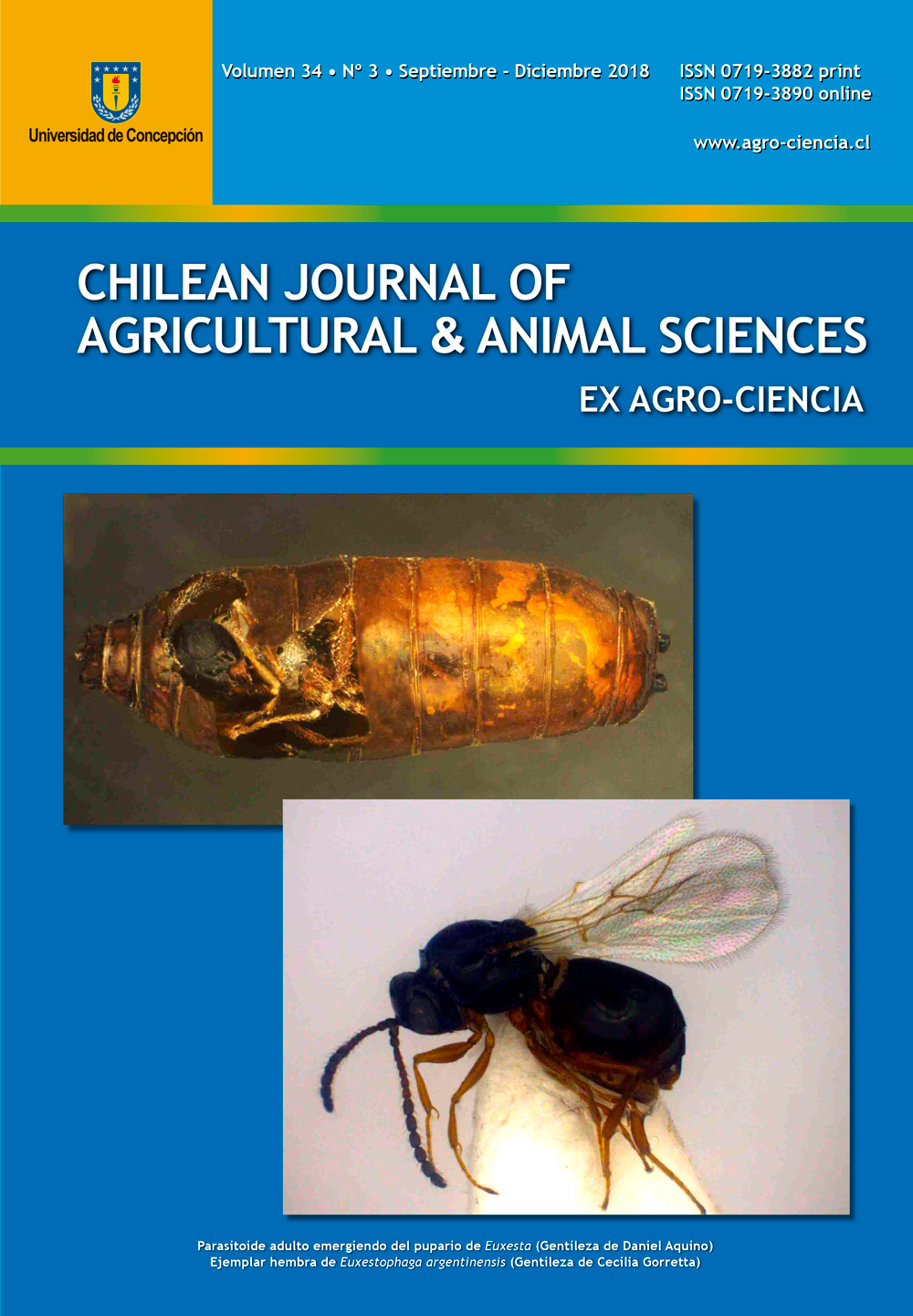Ver ítem
- xmlui.general.dspace_homeCentros e Institutos de InvestigaciónCIRN. Centro de Investigaciones de Recursos NaturalesInstituto de FloriculturaArtículos científicosxmlui.ArtifactBrowser.ItemViewer.trail
- Inicio
- Centros e Institutos de Investigación
- CIRN. Centro de Investigaciones de Recursos Naturales
- Instituto de Floricultura
- Artículos científicos
- Ver ítem
Producción de híbridos interespecíficos entre Nierembergia ericoides y Nierembergia linariaefolia mediante la aplicación de técnicas de rescate embrionario = Production of interspecific hybrids between Nierembergia ericoides and Nierembergia linariaefolia through the application of embryo rescue techniques
Resumen
La hibridación interespecífica es una de las técnicas más utilizadas en el mejoramiento de plantas ornamentales, debido a su alto potencial para obtener vigor híbrido y variación en caracteres, aspectos que no se expresan en las especies originales. El objetivo del presente estudio es obtener híbridos interespecíficos de Nierembergia ericoides Miers × N. linariaefolia Graham utilizando el rescate embrionario, a través del cultivo de óvulos como
[ver mas...]
La hibridación interespecífica es una de las técnicas más utilizadas en el mejoramiento de plantas ornamentales, debido a su alto potencial para obtener vigor híbrido y variación en caracteres, aspectos que no se expresan en las especies originales. El objetivo del presente estudio es obtener híbridos interespecíficos de Nierembergia ericoides Miers × N. linariaefolia Graham utilizando el rescate embrionario, a través del cultivo de óvulos como herramienta para sortear las barreras post-cigóticas. Los óvulos fueron aislados 7 días luego del cruzamiento-polinización y cultivados en medio Murashige y Skoog (MS) modificado. Se realizaron tres fechas de siembra: A: 3/10/17; B: 3/11/17; C: 13/12/17. Los óvulos cuyos embriones iniciaron su desarrollo emitiendo la radícula, se repicaron a tubos de ensayo con medio de cultivo MS modificado. Los tubos se colocaron en cámara de cultivo a 25°C con fotoperíodo de 12 horas e intensidad de 4000 lux. Se comparó el número de óvulos germinados respecto al total sembrados y la cantidad de plántulas obtenidas respecto de los óvulos germinados. Se obtuvieron cinco plántulas de 931 óvulos sembrados en la primera fecha, mientras que en la segunda, se obtuvieron cinco de 642 óvulos sembrados. En la tercera fecha, hubo contaminación fúngica, lo que impidió registrar datos. Se puede concluir que la técnica de rescate embrionario a partir del cultivo de óvulos de Nierembergia permitió obtener exitosamente cruzamientos efectivos entre especies incompatibles.
[Cerrar]
Interspecific hybridization is one of the most widely used techniques in the improvement of ornamental plants because of its high potential to obtain hybrid vigor and character variation, which are not expressed in the original species. The aim of this study was to obtain interspecific hybrids of Nierembergia ericoides Miers × N. linariaefolia Graham using the embryo rescue technique through ovule culture as a tool to overcome post-zygotic barriers. The
[ver mas...]
Interspecific hybridization is one of the most widely used techniques in the improvement of ornamental plants because of its high potential to obtain hybrid vigor and character variation, which are not expressed in the original species. The aim of this study was to obtain interspecific hybrids of Nierembergia ericoides Miers × N. linariaefolia Graham using the embryo rescue technique through ovule culture as a tool to overcome post-zygotic barriers. The ovules were isolated 7 days after crosspollination and cultured in modified Murashige and Skoog (MS) medium. Three sowing dates were carried out: A: 3/10/17; B: 3/11/17; C: 13/12/17. The ovules, whose embryos began their development (those with the radicle emerged), were placed into test tubes with modified MS culture medium. The tubes were placed in a culture chamber at 25°C with a photoperiod of 12 hours and a light intensity of 4000 lux. The number of germinated ovules was compared to the total number of cultured ovules, while the number of seedlings obtained was compared to the number of germinated ovules. Five seedlings were obtained from 931 ovules cultured on the first date, and the same number was obtained from 642 ovules cultured on the second date. A fungal contamination occurred on the third culture date, which prevented data collection. It can be concluded that embryo rescue by the culture of Nierembergia ovules successfully allowed obtaining effective crosses between incompatible species.
[Cerrar]

Autor
Milicia, Víctor José;
Chiesa, Angel;
Coviella, Maria Andrea;
Soto, Maria Silvina;
Fuente
Chilean journal of agricultural & animal sciences 34 (3) : 234-242 (2018)
Fecha
2018
Editorial
Universidad de Concepción, Chile
ISSN
0719-3882
0719-3890
0719-3890
Formato
pdf
Tipo de documento
artículo
Palabras Claves
Derechos de acceso
Abierto
 Excepto donde se diga explicitamente, este item se publica bajo la siguiente descripción: Creative Commons Attribution-NonCommercial-ShareAlike 2.5 Unported (CC BY-NC-SA 2.5)
Excepto donde se diga explicitamente, este item se publica bajo la siguiente descripción: Creative Commons Attribution-NonCommercial-ShareAlike 2.5 Unported (CC BY-NC-SA 2.5)


